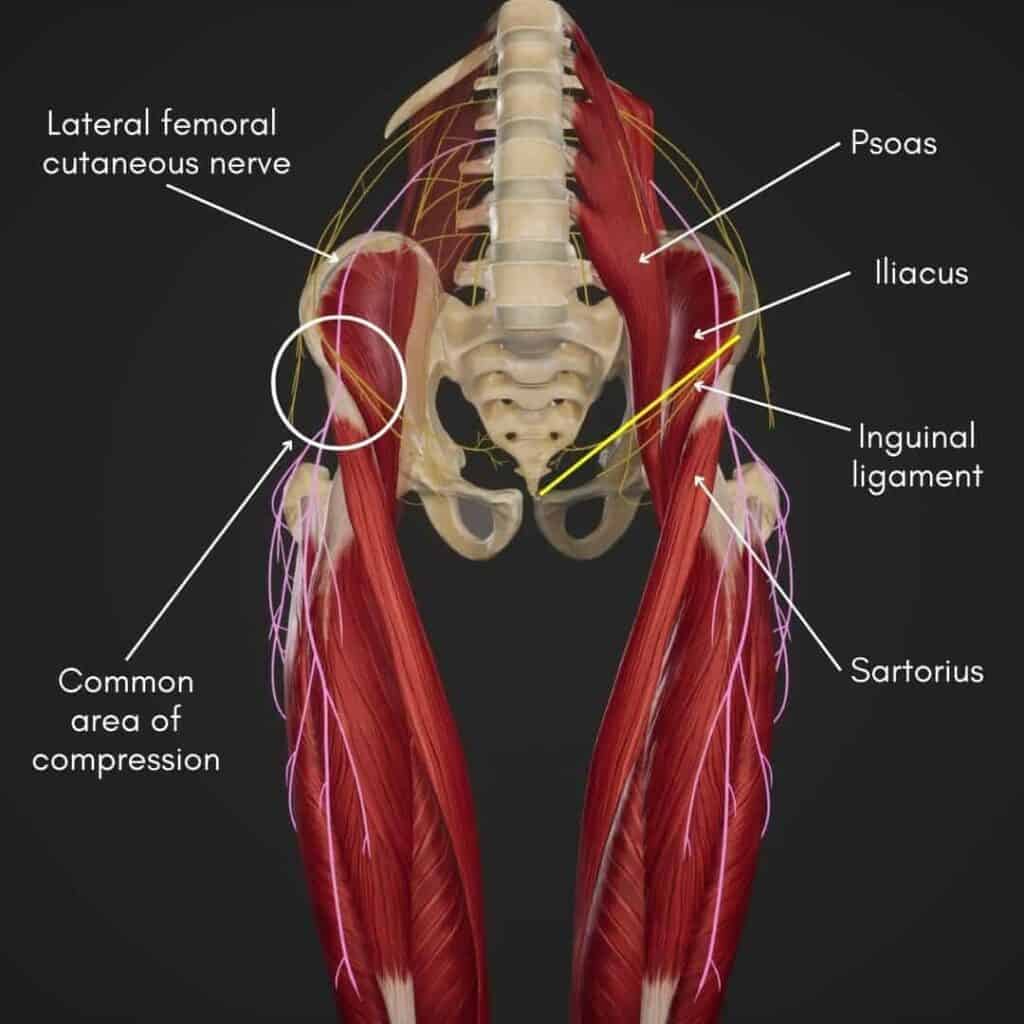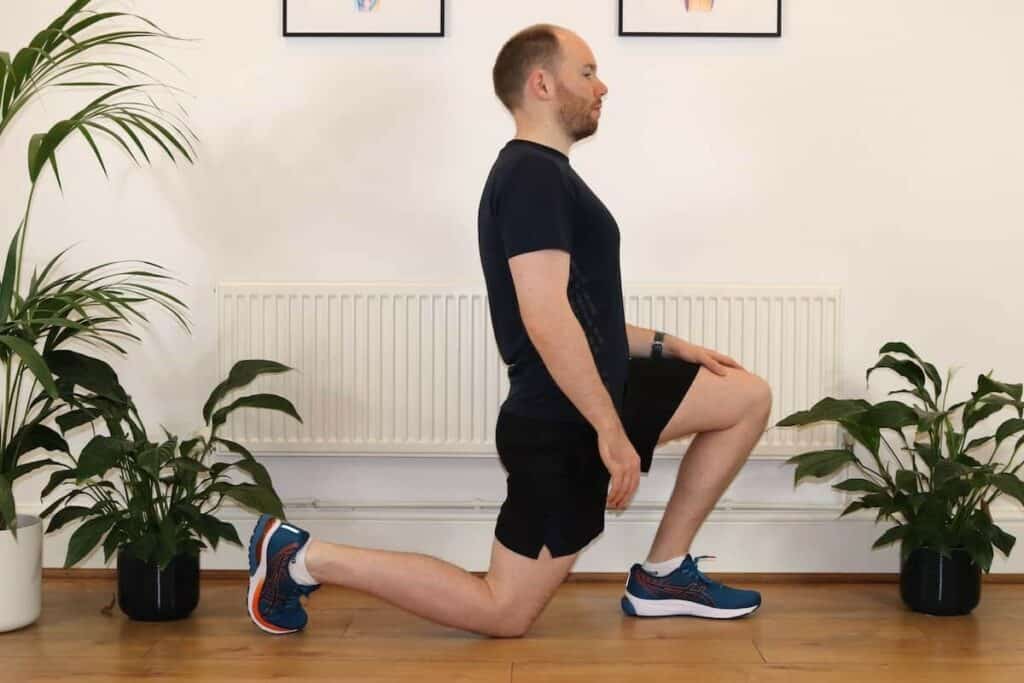Meralgia Paresthetica
- Best Asics Shoes for Flat Feet - October 25, 2024
- Best Running Shoes for Flat Feet - October 22, 2024
- Posterior Tibial Tendonitis - October 21, 2024
Meralgia Paresthetica is the painful condition of compression to the lateral femoral cutaneous nerve. “Meralgia” means neuralgic pain of the thigh, and “Paresthetica” comes from paresthesia, which means altered sensation, usually referring to burning or prickling sensations.
Meralgia Paresthetica can also be known as Bernhardt-Roth syndrome. Compression of any nerve will cause a restricted blood supply to that nerve, resulting in common symptoms.
Symptoms
Meralgia Paresthetica can increase the skin’s sensitivity around the front or side of the hip and thigh and cause painful sensations such as aching, burning, tingling, and stubbing.
These symptoms are located around the side and front of the hip and thigh, from the pelvis to as far as the knee. It can be excruciating to touch the area of the skin affected. And often, symptoms will worsen with longer durations of standing or walking.
Causes
Meralgia Paresthetica is a relatively common cause of pain in this area, with an estimated 3-4 people in every 10,000 affected annually. However, it is hypothesised that it is underdiagnosed and frequently misdiagnosed for other conditions.
These other conditions include referral from the lumbar spine, hip bursitis and hip flexor pain. Factors that will increase your risk of developing symptoms include older age, being overweight, pregnancy, wearing tight clothing such as stockings or pelvis support belts, and recent surgery around the hip or groin.
Trauma to the pelvis area, such as a road traffic incident with a seatbelt injury to the pelvis and biomechanical factors, such as leg length discrepancy or scoliosis, can also increase risk. In addition, some metabolic conditions such as hyperthyroidism, diabetes, excessive alcohol consumption, or tumours in the pelvis area also cause this condition (Parisi et al, 2011).
Understanding anatomy is essential to understanding why some of these factors can have this effect.

Anatomy
It is the structures between which the lateral femoral cutaneous (LFC) nerve meanders that can cause compression and tension on the nerve, resulting in the symptoms of Meralgia Paresthetica. The nerve comes from the lumbar spine (the lower back) as part of the lumbar plexus, it exits the spine at vertebral levels L2 and L3.
The LFC nerve then passes to the outside of the psoas muscles, one of the hip flexors, to the iliac fossa. It then passes in front of another hip flexor muscle, the iliacus. The LFC nerve then passes under or through the inguinal ligament to come close to the surface at the anterior superior iliac spine and in front of the sartorius muscle.
The LFC nerve has two branches that supply the skin. The anterior supplies the anterior lateral thigh down to the knee, and the posterior branch supplies the skin around the greater trochanter and the mid-thigh. Occasionally, it can supply the skin posteriorly to the hip around the glutes.
The lateral femoral cutaneous nerve is a sensory nerve, meaning it sends information from the tissues to the spinal cord and brain but has no effect on making muscles contract.
Therefore, symptoms of Meralgia Paresthetica will only include sensory changes and pain, but not symptoms of weakness or loss of reflexes of tendons in the leg, which are symptoms more commonly associated with a referral from the lumbar spine.

Meralgia Paresthetica Pregnancy
Due to the increased weight carried around the abdomen and pelvis during pregnancy, additional pressure can be placed on the various structures in this area, including compressing the lateral femoral cutaneous nerve.
Meralgia Paresthetica Treatment
The main treatments for Meralgia Paresthetica include short-term pain relief. With a thorough understanding of the causes of the onset, this can be addressed for a long-term resolution.
Nerve pain medications, including antidepressants and antiseizure, are an effective treatment for symptom relief. While physical therapy, stretches, and exercises can also play a helpful role in some cases.
However, in cases caused by being overweight, lifestyle, diet and general exercise should be addressed with weight loss as a goal. Looking at lifestyle and medical history, as well as taking blood tests to look at health, will help to address potential causes. In rare cases, more invasive treatments become necessary, such as a nerve block, injections or surgery.

Meralgia Paresthetica Sleeping Position
In our clinical experience, the best position to ease pressure from the femoral nerve and find some comfort is lying on the opposite side, with hips and knees only slightly bent and a thick pillow between your legs. We recommend this position for pregnant women, too.
While many people report the worst pain during standing and walking, sleep can be disturbed due to the symptoms.
